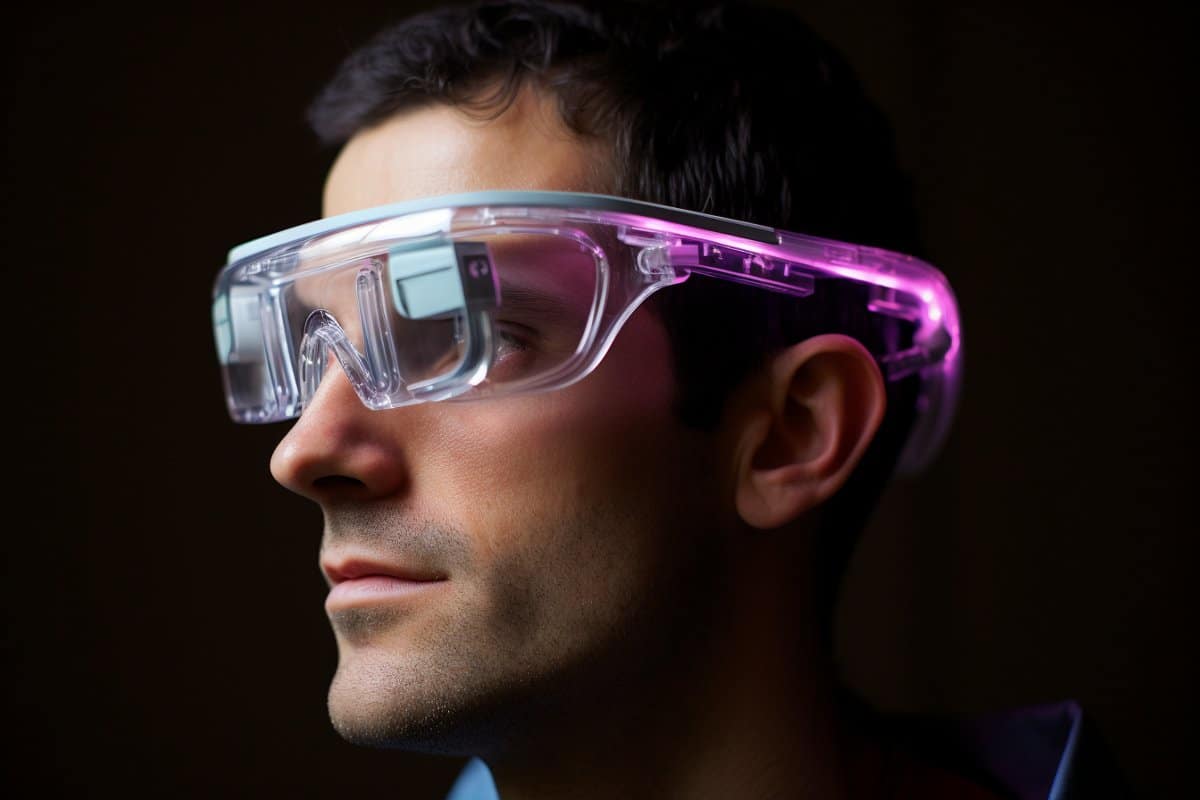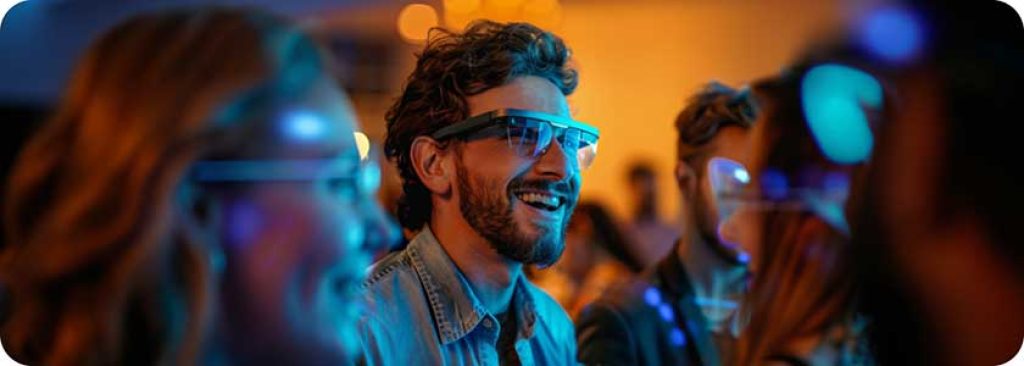Innovative Solutions in Assistive Technology for Visual Problems
The landscape of assistive innovation for aesthetic problems is progressing swiftly, presenting a variety of ingenious options that improve accessibility and independence. From innovative smart device applications that promote navigating to wearable devices designed for real-time guidance, these devices are reshaping the experiences of those with visual problems. Furthermore, the combination of smart home innovations and academic sources has the possible to promote higher neighborhood interaction. However, the implications of these developments raise important questions regarding their accessibility and performance in diverse contexts, warranting a better evaluation of their broader effect.
Advancements in Mobile Phone Applications
In current years, developments in mobile phone applications have substantially transformed the landscape of assistive innovation for people with visual problems. These applications take advantage of the effective sensors and capacities of contemporary smartphones to supply individuals with tools that enhance independence and ease of access in their lives.
Notable among these technologies are applications created for item acknowledgment, which make use of the mobile phone's camera to determine things and provide verbal summaries. Such functions encourage customers to navigate their atmospheres extra effectively, whether determining items in shops or locating individual possessions in your home. Additionally, text-to-speech applications have actually boosted significantly, allowing individuals to capture published message through their tool's electronic camera and obtain immediate audio comments, thus promoting analysis and understanding.
Community-driven applications have actually promoted social communication and resource sharing amongst individuals with visual problems, producing a helpful network that improves their high quality of life. Generally, smartphone applications have become indispensable allies in promoting autonomy and ease of access for people with visual problems.
Wearable Gadgets for Navigation
Wearable gadgets for navigating have actually become a groundbreaking option for individuals with aesthetic disabilities, supplying hands-free assistance that boosts flexibility and positioning. These devices generally utilize sophisticated modern technologies, consisting of GPS, ultrasonic sensors, and artificial intelligence, to give real-time feedback and instructions to individuals as they navigate their setting.
One notable instance of wearable navigating innovation is smart glasses, which can identify challenges and relay auditory or haptic comments to the user, enabling safe and efficient movement in numerous setups. Various other tools, such as belts and vests furnished with sensors, can similarly educate individuals of their environments by giving informs concerning close-by items or changes in surface.
In addition, lots of wearable gadgets integrate with mobile phone applications, allowing users to tailor their navigating choices and receive customized course suggestions. This personalization can substantially improve the user experience, equipping individuals to travel with better confidence and self-reliance.
As modern technology proceeds to create, the potential for wearable navigating devices to boost the lifestyle for people with visual disabilities remains significant, leading the way for even more inclusive and available atmospheres.
Smart Home Innovation Integration

In addition, smart appliances equipped with responsive interfaces or auditory responses supply intuitive communications that provide specifically to the demands of those with aesthetic problems. For instance, clever fridges can introduce their materials and expiry dates, while smart stoves can lead customers via the food preparation process with audio instructions.
Home automation systems, such as wise doorbells and protection cameras, supply satisfaction by permitting customers to obtain informs and accessibility live feeds via their mobile phones, enhancing personal security (AI-powered visual aids). Furthermore, assimilation with smartphones and tablet computers guarantees that customers can handle their home atmosphere from anywhere within their facilities
As smart home innovation remains to evolve, it holds the prospective to change the living experiences of individuals with aesthetic problems, fostering freedom and improving top quality of life in a progressively linked world.

Educational Equipment and Resources
Accessibility to reliable educational tools and resources is important for people with aesthetic impairments, as it encourages them to involve completely in their knowing experiences. Numerous assistive technologies have actually been established to enhance ease of access and foster independent learning. Display visitors, for instance, transform message right into speech, enabling students to accessibility electronic content effortlessly. AI-powered visual aids. Furthermore, refreshable braille displays give tactile feedback, making it easier for students to communicate with written product.
In addition, educational software application especially created for aesthetically damaged users uses features such as high-contrast modes and adjustable message dimensions. These devices suit diverse knowing styles and make certain that students can tailor their educational experience to their requirements.
Moreover, access to audio publications and virtual libraries broadens the variety of offered discovering materials, enabling students to explore topics comprehensive without the constraints enforced by standard print resources. Collaborative platforms that incorporate access attributes likewise facilitate team jobs, ensuring that aesthetically impaired students can a knockout post add meaningfully alongside their peers.
Area Support and Engagement
A durable network of neighborhood assistance and interaction is important for people with visual problems, promoting a comprehensive atmosphere where they can thrive. Neighborhood organizations, neighborhood campaigning for groups, and volunteers play a pivotal function in providing sources, details, and companionship, which are essential Get More Info for improving the top quality of life for those impacted by aesthetic disabilities.
Interaction activities such as workshops, gatherings, and support system not just promote ability advancement however likewise promote social interaction, decreasing feelings of isolation. These campaigns urge people to share successes, obstacles, and experiences, consequently strengthening community bonds. In addition, collaborations with regional companies can lead to better availability in public areas, further incorporating people with visual problems right into the community.
Modern technology also enhances community involvement with online systems that provide virtual assistance groups and sources, allowing people to link despite geographical barriers. By using both electronic and in-person options, communities can develop an extensive assistance network. Ultimately, cultivating partnership amongst various stakeholders-- consisting of families, instructors, and healthcare specialists-- ensures that people with aesthetic disabilities obtain the holistic assistance necessary to navigate day-to-day life efficiently and with self-respect.
Conclusion
Cutting-edge remedies in assistive modern technology for aesthetic problems significantly enhance the quality of life for people encountering these obstacles. The assimilation of smart device applications, wearable tools, wise home innovation, and academic tools fosters greater freedom and access.
The landscape of assistive modern technology for aesthetic disability is progressing quickly, presenting a range of cutting-edge options that improve ease of access and independence. Community-driven applications have actually cultivated social communication and resource sharing among individuals with visual problems, producing a supportive network that boosts their high quality of life. In general, smart device applications have actually become indispensable allies in advertising freedom and accessibility for people with visual impairments.
Several individuals with aesthetic disabilities are finding better autonomy through the assimilation of wise home technology.Cutting-edge services in assistive modern technology for visual impairment substantially enhance the high quality of life for individuals encountering these obstacles.